SpVgg Unterhaching are currently 5th in 3. Liga, the third tier of German football. The Bavarian team were last in the Bundesliga in 2001 and in the 2. Bundesliga in 2007, and ever since, have floated between the third and fourth tier of German football.
Nevertheless, under Marc Unterberger this season, they are looking to return to 2. Bundesliga, after a 17-year absence. The German coach is in his first-ever role as manager at the senior level, but he seems unfazed as he looks to drive his club to a second (his first) promotion in as many years.
Watching Unterhaching, they immediately stand out as a side that spend time working on set plays. They look highly coordinated, with precise movements made by players to ensure one attacker can attack the ball without any disruption.
Wyscout only provides access to their recent six fixtures in 3. Liga, so it is unclear how long they’ve been doing this or how successful they have been throughout the season, but if these six games are anything to go by, chances from set plays have likely been coming regularly for the entirety of the season.
In this tactical analysis, we will examine the tactics behind Unterhaching’s corner kicks, in-depth analysing how they are able to access the near side of the six-yard box. This set-piece analysis will also examine the details behind why they attacked this part of the box, the details behind the different screens that are utilised, and the importance of timing and coordination when using screens.
Use of Screens
First of all, it is important to remember the context. We are in the third tier of German football, with a squad recently promoted from the fourth tier. The quality and consistency of the deliveries coming into the box are less reliable than we can expect at the highest levels of football. It can be particularly difficult to have the accurate weight on the cross for the ball to drop in specific horizontal zones, where the ball has to miss out on certain zonal defenders and drop in front of others.
As a result, based on the different zones available to target in the image below, Unterhaching attempt to make the task as easy as possible for their players, with the intent to attack the nearest horizontal spaces available, at the near side of the six-yard box. In doing so, the risk of crosses being underhit is almost eliminated, as even passes on the floor into the near areas will reach the target. Even in situations like the one below, where a defender is in front of the corner taker, the corner taker has a lot of space to hit to ensure the ball reaches the area in front of the six-yard box.
Rather than attempting to drop the ball in a horizontal space, the ball must simply just reach the nearest horizontal space. The corner taker is given a simpler role of ensuring that they can make the ball pass through the vertical channel required. The vertical space that Unterhaching attempt to exploit is located between the red and green vertical lines. The space between the byline and green line drawn can be a highly valuable area to target, as seen by the recent goal scored by John Stones for Manchester City against Liverpool, but with the position being so close to being out of bounds and usually being highly guarded, means that the risk is too high. By targeting the next vertical space along, Unterhaching can ensure that the ball can frequently arrive where it is supposed to, meaning that they can make their corner routine repeatable, attempting it numerous times throughout a game.
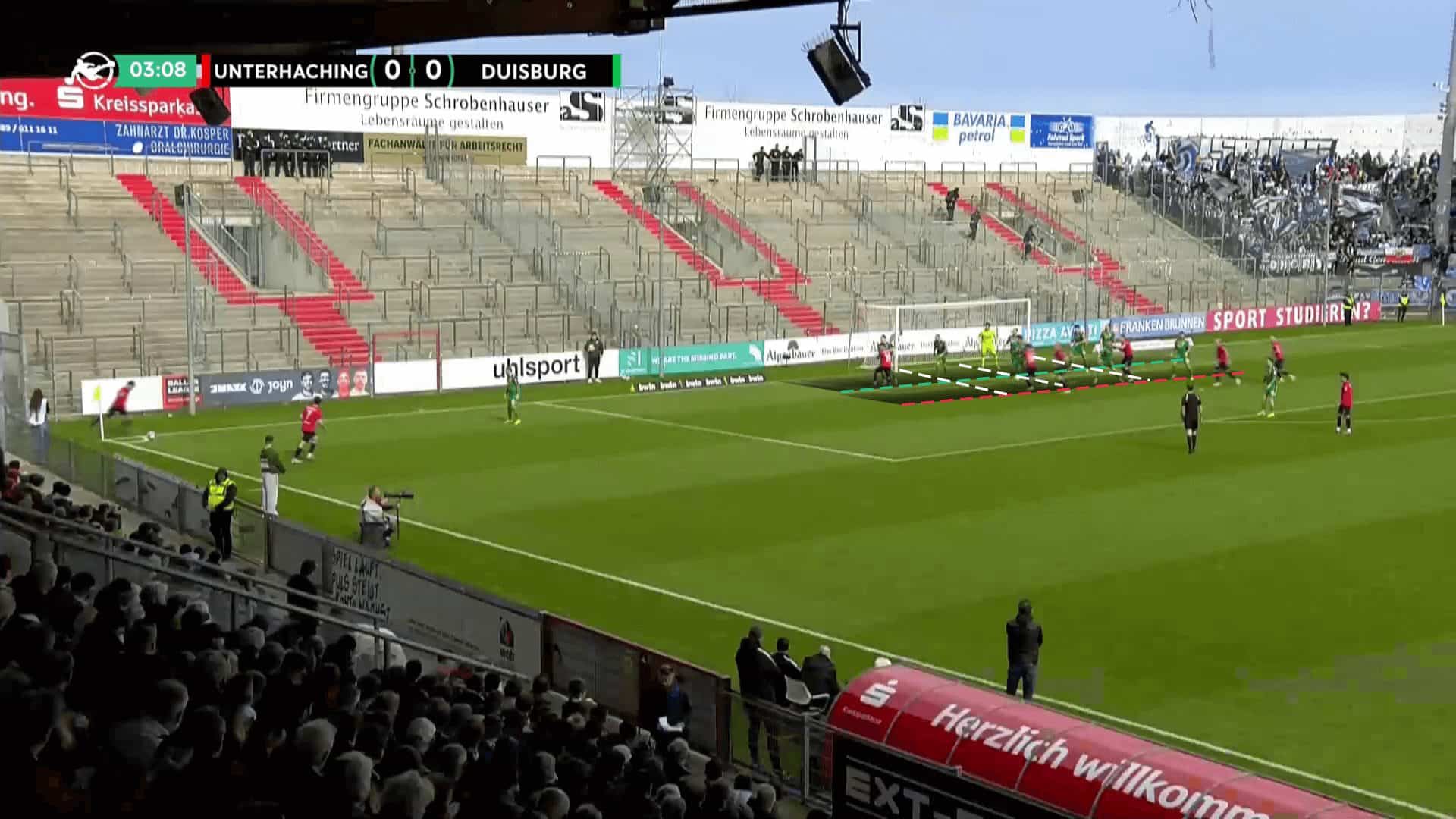
There are two important reasons why Unterhaching has been so successful at setting screens: timing & coordination.
First of all, the timing of a screen is critical. Obviously, you want to avoid the screen being set too late, where the zonal defender has time to attack the ball and clear it. However, it is equally important that a screen isn’t made too early. Some of the most effective corner routines take inspiration from poker; keep your cards close to your chest. If a player setting a screen can keep their intention hidden until as late as possible, he gives the opposition little to no time to react to changes in the penalty box and no chance to adapt their defensive set-up.
As we can see in the example below, the screen will be set on the nearest zonal defender. However, the player setting the screen hasn’t done so yet, even though the corner taker is about to strike the ball. As the ball is hit, the screen is quickly set, which means the opposition has the time it takes for a cross to enter the box and react. They have no time to move another defender to protect that zone, meaning, through excellent timing Unterhaching are able to create space in the zones they want to target, through the use of screens.
In addition to the excellent timing, we can see that these corner routines are prepared, and each player is clear on the ideas. As the screen creates the space highlighted in the image below, we can see one attacker attacking the space whilst another screen has been set on his marker. This tells us that Unterhaching’s staff have clearly instructed the players about the different areas they want to attack for each corner kick, who sets the screens and on whom, and which player attacks the ball. This is a highly efficient system designed to create as much space as possible for one player to arrive in and attack the ball, whilst others create the space or collect loose balls. The coordination of these moves is at a high level and leads to high-quality chances being made in a way which can be repeated.
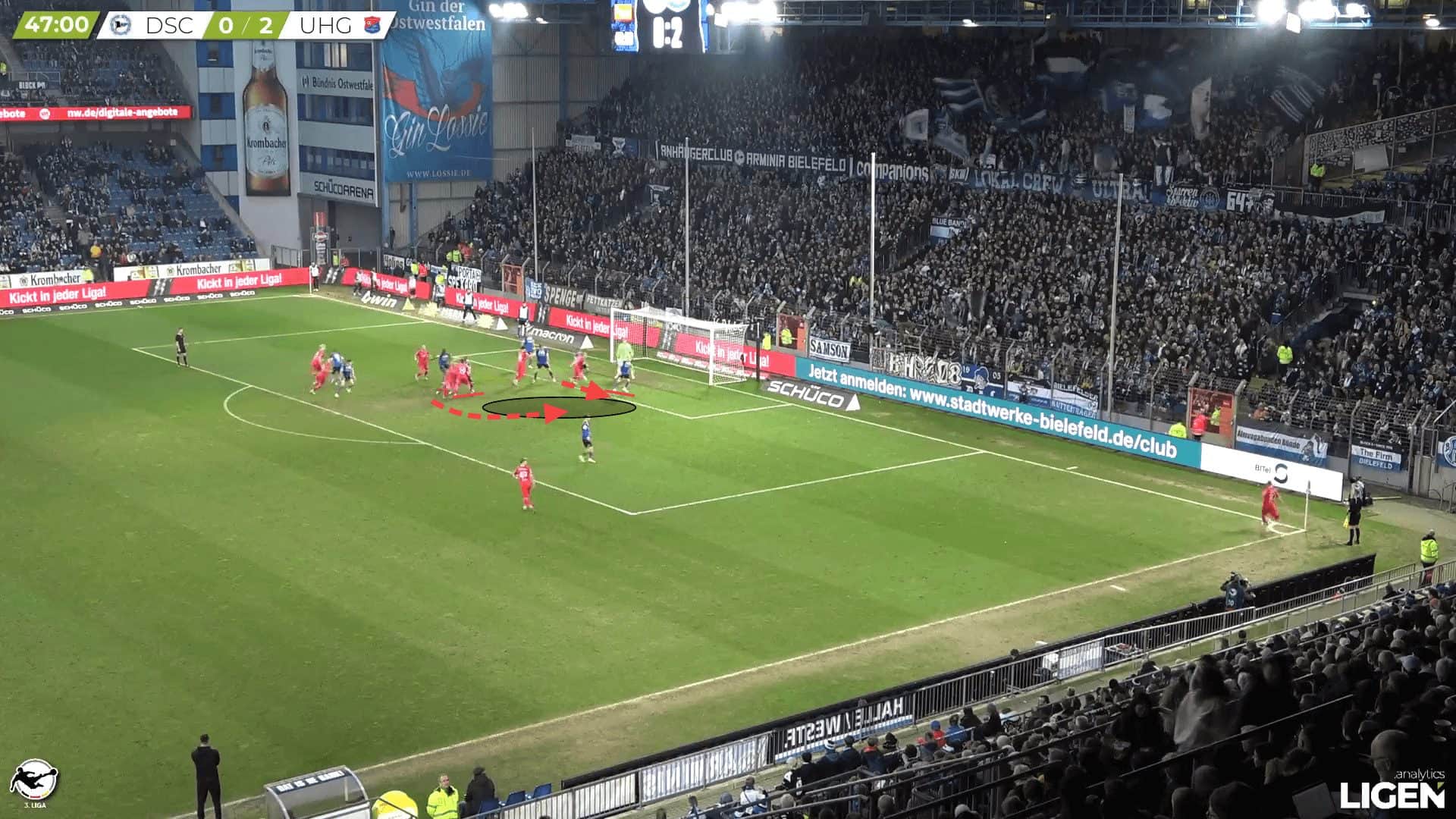
The defensive set-up of the opposition changes from game to game, but the idea Unterhaching implement remains consistent: deny the nearest zonal defenders (in different vertical channels) from attacking the ball. In the majority of these scenarios, the intent is to attack the space at the near edge of the six-yard box, where you can usually find one or two zonal defenders located. The earlier example shown included a team with 3/4 zonal defenders, but they were all on the same vertical line.
When a defending side has all zonal players on one line, each defender is only responsible for the area in front of them until their teammate, meaning if you set a screen on the nearest player, no defender along the line will be able to step up and cover as the distance will be too big.
Against sides with zonal defenders on different vertical lines, defenders have more responsibility in covering both vertical and horizontal spaces, meaning they have more freedom in how far they can roam to attack the ball, and it is essential to screen any defender capable of reaching the area which the ball will be delivered into.
The example below shows the nearest zonal defender ready to step up to protect the space in front of him. This informs Unterhaching to set a screen on him to make sure the ball can enter that space freely.
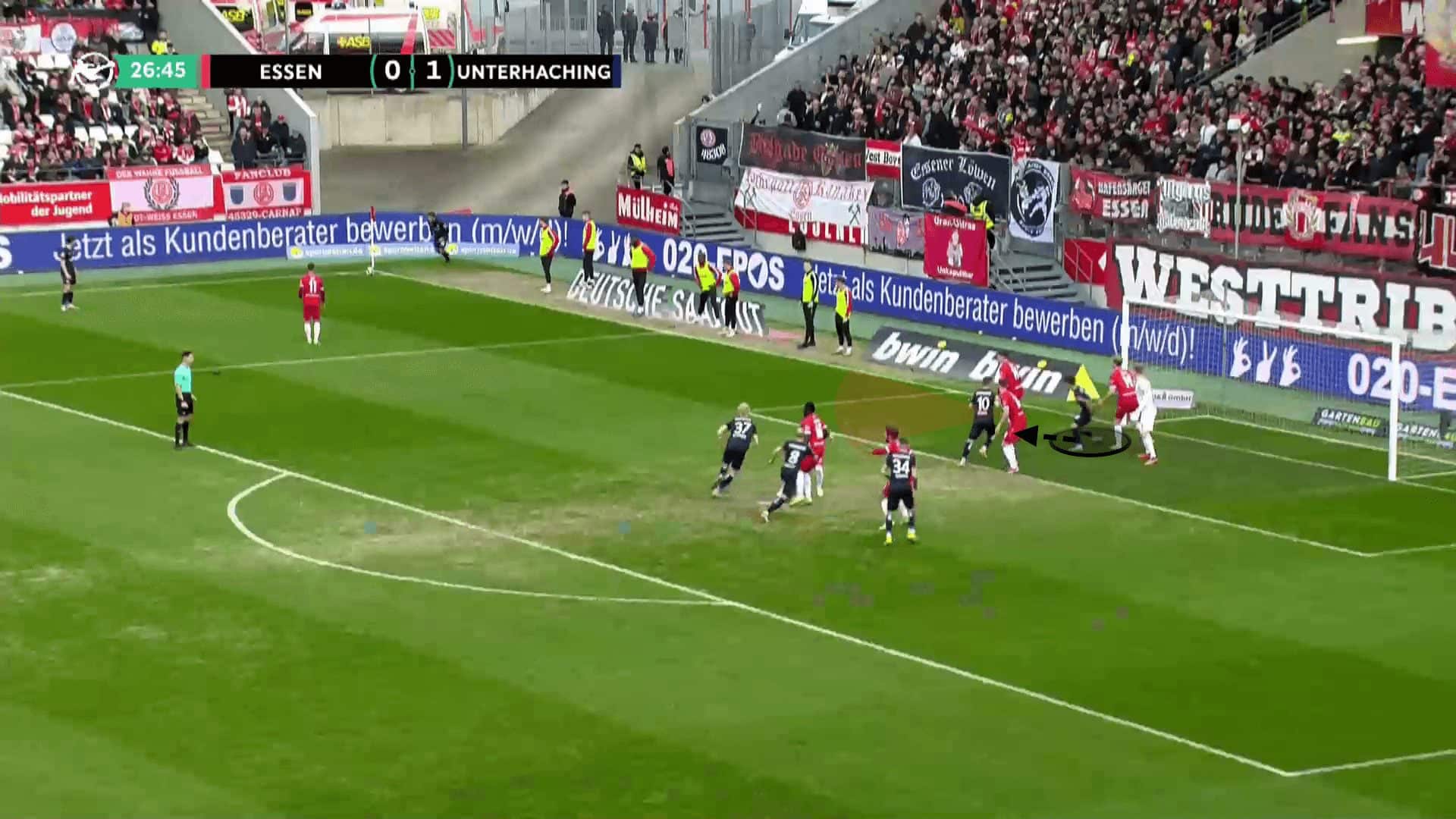
The screen is set to ensure the ball arrives with a black shirt meeting it first. A second screen is also set on the next defender, who is seen attempting to move towards the target area.
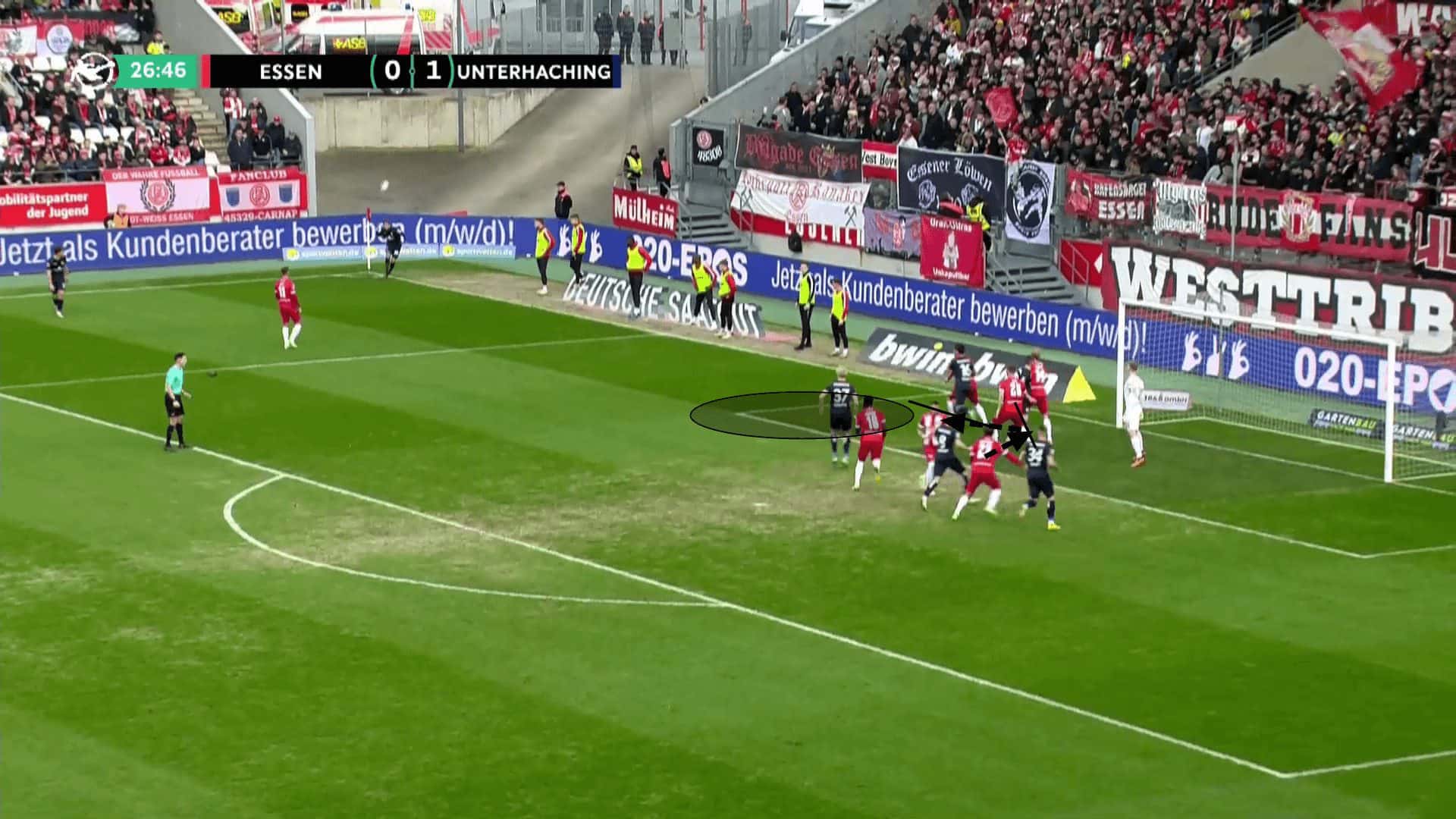
As mentioned before, what makes Unterhaching special from set-pieces is their coordination of movements, with each player being given a role during corner kicks, ensuring that space is maximised and every eventuality is covered. Yet again, two screens are set on the nearest two zonal defenders, whilst the target player’s man marker also has a screen set on him. This means he can arrive in the target area with maximum space to ensure his header is executed as well as possible.
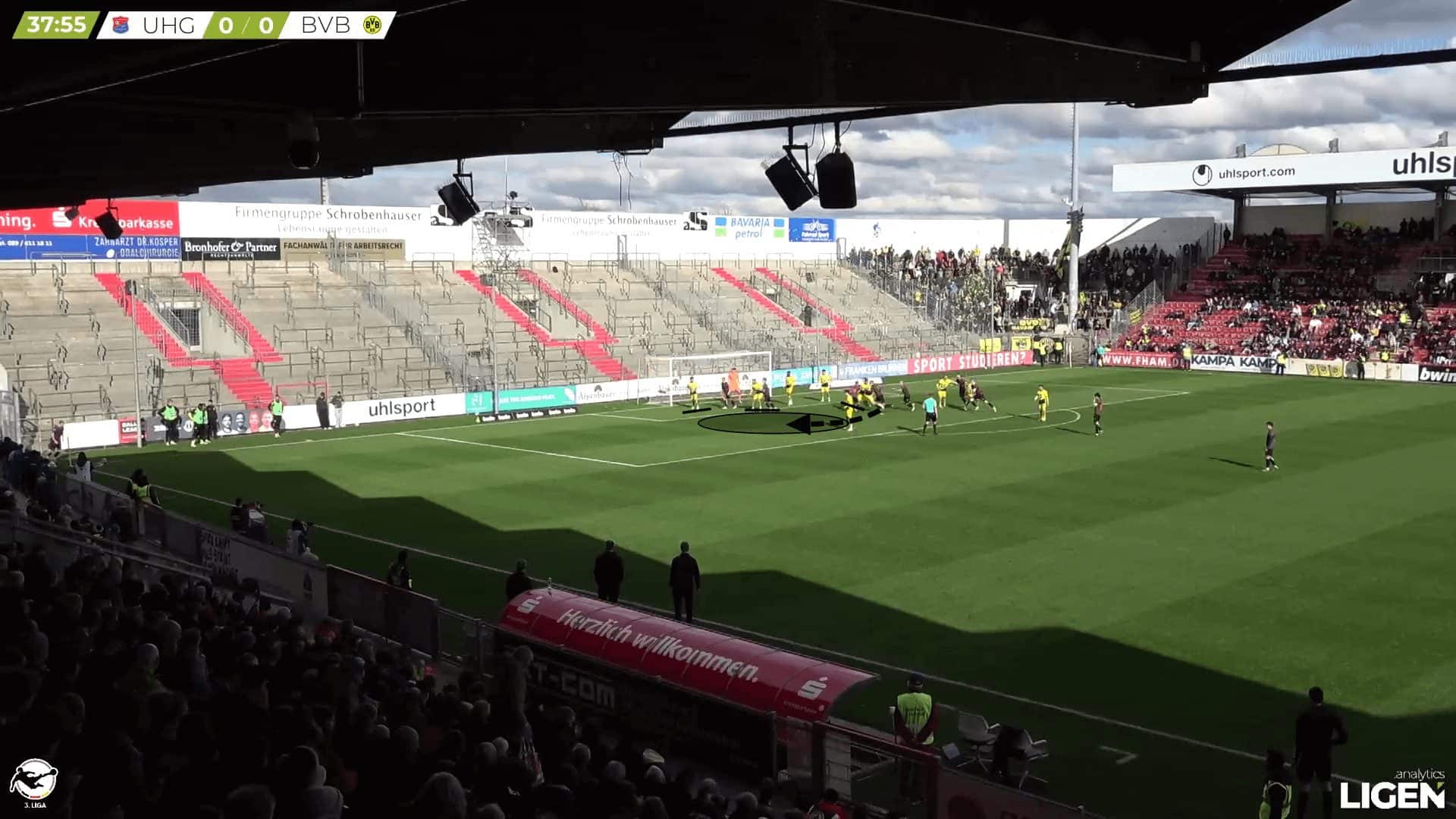
Unterhaching attack the box with 6/7 players each time. They need around five players to ensure the target area is left open and the target player is unmarked. However, the issue of this corner is that due to the position and angle of the goal, it can be hard for the headed effort to result in a goal. Unterhaching make sure to attack the box with an additional one or two spare players in order to increase the odds of a goal, by tasking them with collecting loose balls in and around the six-yard box and attacking rebounds. One player roams the six-yard box, ready to react, whilst the other attacks the back post, like in the example below, where any rebounds or headers across the goal can be tapped in at the back post. When a header is attempted from the near side of the six-yard box, the zonal defenders naturally get dragged in that direction, meaning that the space at the far side of the six-yard box for this player is always available, like in this routine against Borussia Dortmund II.
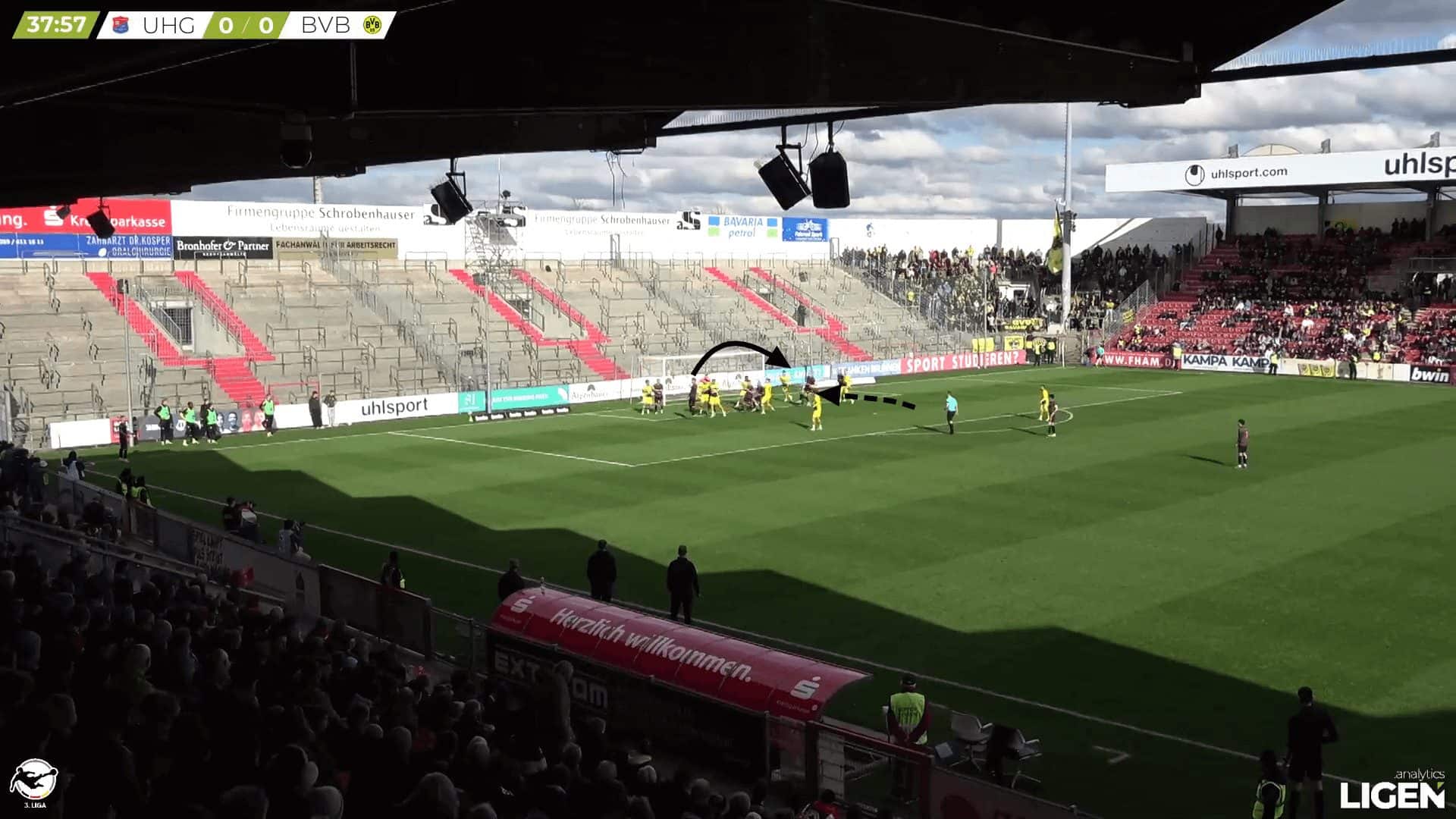
One variation which Unterhaching have used is to attack the deeper areas of the penalty area when the primary target is harder to access. We can see in the example below that the space in which the cross can land in its usual spot is severely limited, with two players in the path of the cross, whilst another three zonal defenders are in position to reach the target zone. As the initial idea is too risky to execute, Unterhaching have shown the ability to adapt whilst maintaining their principles. The clear space is around the penalty spot, with the corner taker only needing to ensure the ball goes over the player attempting to block the cross. As the cross is played, the nearest three attackers all stand strong, preventing the nearest defenders from reaching the target area. With the defending side so focused on protecting the near side of the six-yard box, the target attacker has no one marking him and is able to arrive in the space with ease due to the threat of their initial corner routine.
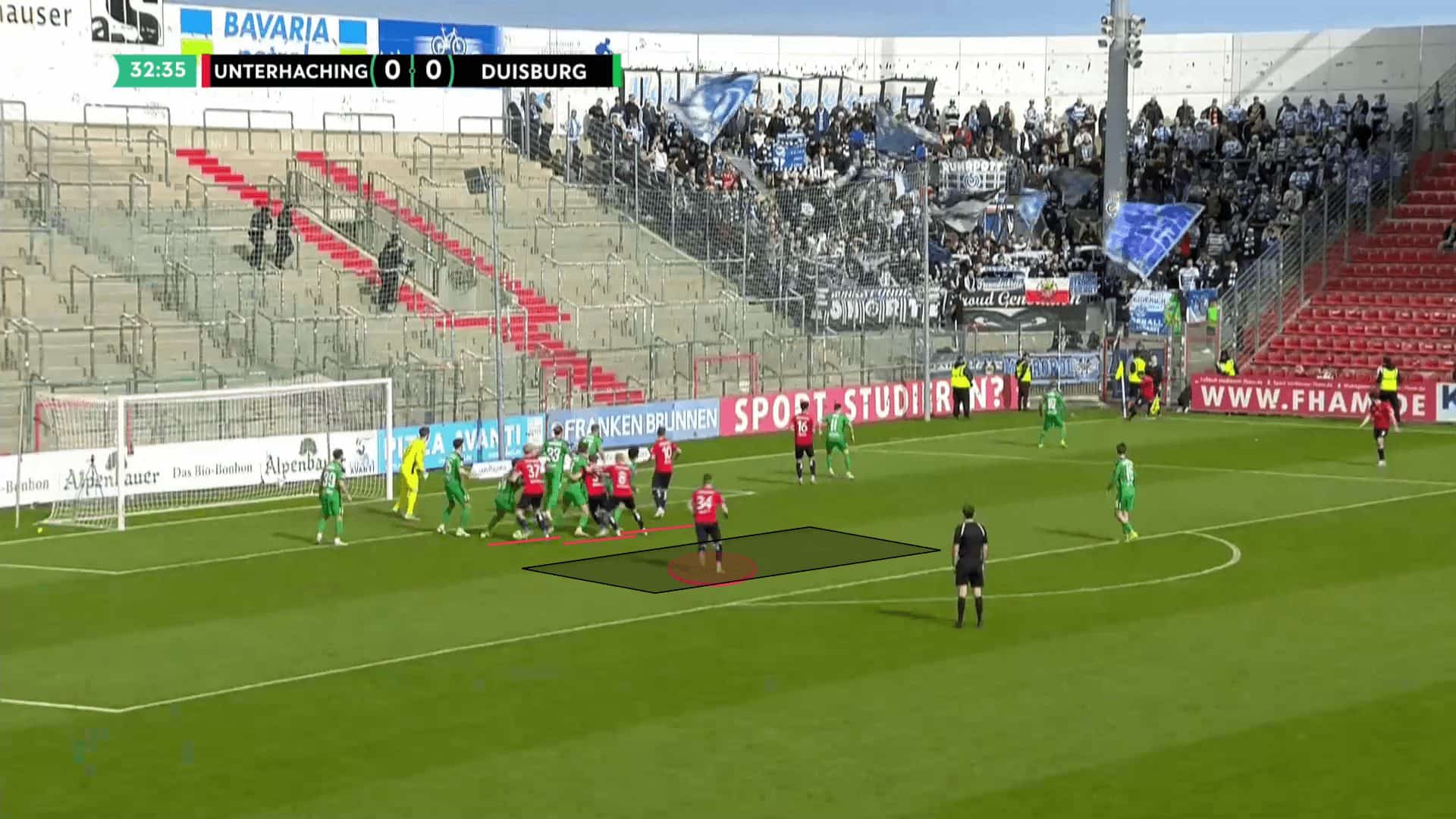
The same ideas are translated during free kicks: find the largest space available and prevent the opposition from reaching them. As we see in the example below, the furthest attacker is attempting to attack the space behind the defensive line on the far side whilst a screen is set on the nearest defender to that space. The other defenders assume that the last defender is responsible for protecting that space. However, with the well-timed screen, it is set as the ball is delivered, and no defender has time to look around and organise the defensive unit whilst also tracking the ball and defending the box. This gives the free kick taker as much space as possible to cross the ball into whilst giving the attacker the time to attack the ball without any disruption.
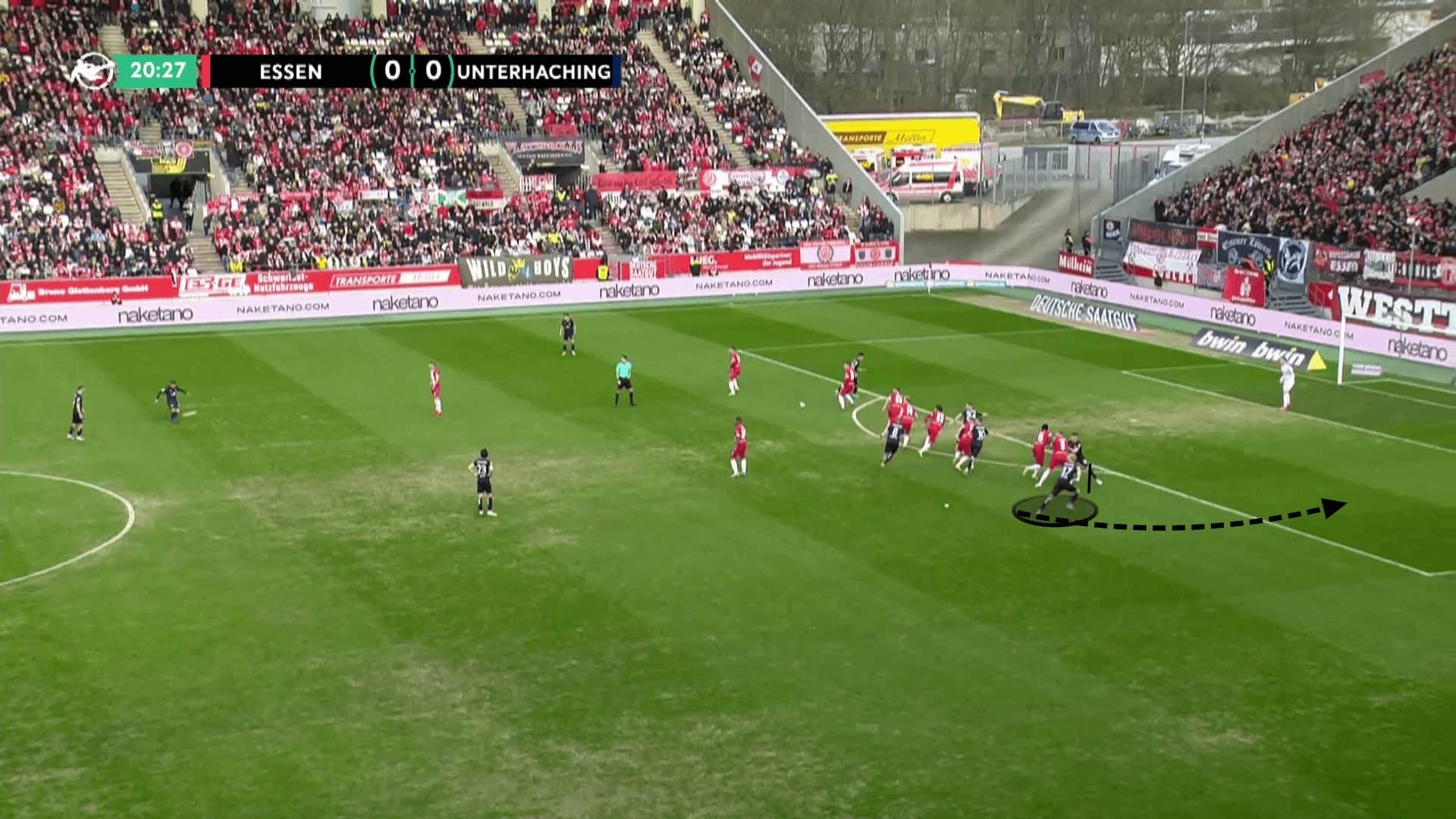
Summary
This tactical analysis has detailed the reasons why Unterhaching have been so eye-catching from corner kicks thus far. Their clear ideas during corner kicks give each player clear roles, allowing them to think on their feet and adapt to different defensive structures. Unterhaching’s use of screens has effectively created maximal space in specific zones, allowing players to arrive with clear separation from their markers. It will definitely be worth keeping up with this side’s set pieces throughout the season as they look to fight for promotion!






Comments